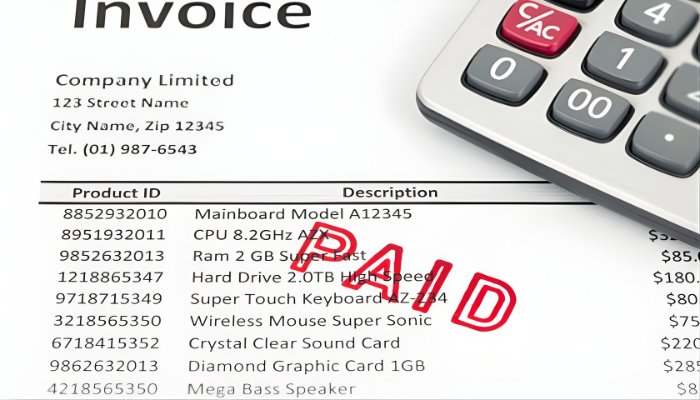
If you’ve been running a business for any length of time, you know this much is true: it’s not the big wins or sudden dips that define your success, it’s how steady you stay in between. That’s where working capital comes in.
But in today’s lending environment, staying steady can feel like a moving target. Interest rates are still high. Traditional lenders are playing it safe. And locking into long-term debt just to cover a short-term gap? That might create more risk than reward.
So what do you do when you need more breathing room, but don’t want to take on a years-long repayment plan?
We're here to answer that exact question. Whether you're preparing for seasonal shifts, managing slower receivables, or just looking for more flexibility, there are practical ways to strengthen your working capital without tying your hands.

Why Working Capital Matters More Than Ever
In today’s environment, cash flow isn’t just a buffer; it’s a competitive edge.
When opportunities come up or things take a sudden turn, businesses with working capital can act quickly. That’s especially important when you’re trying to:
- Secure time-sensitive vendor discounts
- Bridge the gaps between invoicing and payment
- Stock up ahead of a seasonal rush
But here’s the reality: access to financing has become harder across the board.
According to a 2025 Survey of Business Resource Organizations, nearly 60% of respondents said they had difficulty helping small businesses obtain credit. Tightened bank lending standards, confirmed by the Federal Reserve’s own data, have put added pressure on small and midsize businesses already trying to adapt to rising costs and economic uncertainty.
Many business owners are seeing fewer approvals and longer wait times from banks (Entrepreneur), especially if they don’t have extensive credit histories or collateral.
That’s why more owners are moving toward short-term working capital solutions that provide flexibility without long-term strain. In today’s economy, staying agile is just as important as staying solvent.

What to Watch Out for With Long-Term Loans
Long-term debt has its place, such as financing equipment or expanding operations, but it may not be a suitable fit for short-term working capital needs.
Why?
Because long-term loans often come with:
- Fixed monthly payments that don’t flex with your cash flow
- Prepayment penalties that discourage early payoff
- Years-long terms that outlast the short-term challenge you were trying to solve

Smart, Flexible Alternatives to Strengthen Working Capital
Here are funding strategies that give you the capital you need, without long-term entanglements.
1. Invoice Factoring
Instead of waiting 30, 60, or 90 days for payment, factoring lets you unlock cash tied up in unpaid invoices.
How it works: You sell your invoices to a factoring company (like us) and get most of the value up front, often within 24 - 48 hours.
Why it’s smart: It’s not a loan, so you're not adding debt or affecting your credit. And it grows with your sales.
2. Asset-Based Lending
This option lets you use what you already own, inventory, equipment, or receivables, to access working capital.
How it works: You secure a revolving line of credit or loan using your business assets as collateral. The available credit increases as the value of your assets increases.
Why it’s smart: You’re putting your existing assets to work. It’s often more flexible and accessible than traditional financing, especially for businesses with valuable collateral but limited cash flow.
3. Purchase Order Funding
Need to fulfill a large customer order but can’t cover the upfront supplier costs? PO funding lets you say “yes” without draining your cash reserves.
How it works: A financing company pays your supplier directly so the goods can be produced and shipped. Once your customer pays for the order, the finance company collects their advance and sends you the profit.
Why it’s smart: You get the funding to cover production costs upfront, so you don’t have to turn down big orders. It’s short-term, scalable, and ideal for growing businesses managing large or unexpected demand.

More Ways to Boost Working Capital (Without Borrowing)
Working capital isn’t just about financing; it’s also about how you manage what’s already coming in and going out.
JPMorgan Chase recommends a few practical strategies that don’t involve new funding at all:
- Extend your payment terms with vendors (Days Payable Outstanding)
- Speed up collections (Days Sales Outstanding)
- Optimize inventory turnover (Days Inventory Outstanding)
- Automate your payables and receivables
These internal adjustments can improve cash flow just as effectively as outside funding, sometimes more.

How to Know Which Option Is Right for You
Ask yourself:
- Is this a short-term cash need or a long-term investment?
- Will I see a return within a few months?
- Do I have seasonal swings or irregular income?
If you're covering payroll, purchasing inventory, or bridging the gap between invoicing and payment, shorter-term options are often the better fit.

Keep Cash Flow Strong, Not Strained
Accessing capital doesn’t have to mean long-term debt or rigid repayment terms.
Whether you're managing seasonal demands, bridging a temporary gap, or gearing up for growth, you have smarter, more flexible options. From invoice factoring to asset-based lending, these strategies help unlock cash you’ve already earned or resources you already own, without waiting months for a check or taking on unnecessary risk.
The more you understand your options, the better equipped you’ll be to make decisions that support stability, flexibility, and sustainable growth.














